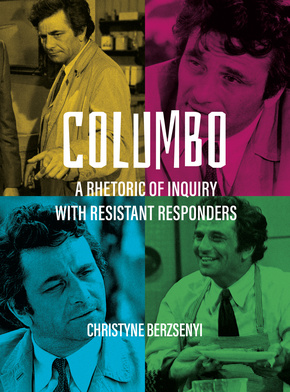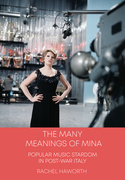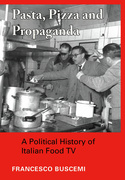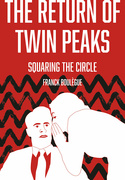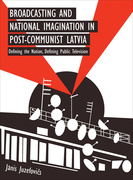Columbo (Book)
A Rhetoric of Inquiry with Resistant Responders
An analysis of the hit television series Columbo specifically looking at the famous detective’s investigative method of rhetorical enquiry. Through a barrage of questions about tiny details and by feigning ignorance, Columbo employs Socratic method of questioning based on temperance and restraint to discover truths from guest star murderers.
Edition
This book presents an analysis of Lieutenant Columbo's investigative method of rhetorical inquiry as seen in the television police procedural Columbo (1968-2003). With a barrage of questions about minute details and feigned ignorance, the iconic detective enacts a persona of ‘antipotency’ (counter authoritativeness) to affect the villains' underestimation of his attention to inconsistencies, abductive reasoning, and rhetorical efficacy. In a predominantly dialogue-based investigation, Columbo exhausts his suspects by asking a battery of questions concerning all minor details of the case, which evolves into an aggravating tedious provocation for the killer trying to maintain innocence. Based on the Ancient Greek ideal of Sophrosyne (temperance, restraint) and the Socratic method of questioning to discover truths, the Lieutenant models effective rhetorical inquiry with resistant responders: shy, secretive, anxious, emotionally-disconnected, angry, arrogant, jealous, and, in this case, murderous conversants. While designed to be critical and theoretical, this text strives to be accessible to interdisciplinary readers, practical in application, and amusing for Columbo buffs.
Christyne Berzsenyi is associate professor of English at Penn State Wilkes-Barre.
PART ONE: UNDERSTANDING THE LIEUTENANT AND HIS VILLAINS
- Introduction: Introduction to Columbo And Columbo
- Columbo, An Inverted Mystery
- A Snapshot of Television and Film History: Pre-Columbo
- The Underestimated Detective (1910)
- Scholarship and the Lieutenant
- Historical, Literary, and Television Contexts: Shift to Grit and Realism
- Columbo and the Lieutenant: Literary Influences
- The Firsts in Short and Long Detective Fiction in English (1841-62)
- Fyodor Dostoevsky’s Lieutenant Porfiry Petrovitch: Pretenses (1886)
- Arthur Conan Doyle’s Sherlock Holmes: Genius Detective (1887)
- British Golden Age, Drawing Room Mysteries, The Cozy (1920-40)
- Characterology and Character-Based Detective TV Shows
- The Lieutenant with His Sergeants
- Columbo: A Blend of Genres, Influences, and Deviations
- Columbo, The Suspect Charmer
- Suspects as Resistant Responders
- Charming the Stinging Villains
- Glamour in Columbo
- Two Sides of Columbo Presented on a Case by Case Basis
- Columbo Talks to 'Dog', 'Étude in Black' (1972)
- Columbo and a Resistant Responder, 'Double Shock' (1973)
- Dual Personae, 'An Exercise in Fatality' (1974)
- Columbo and the Ancient Greek Virtue of Sophrosyne
- Looking for the Right Word: Antipotency
- The Columbo Killer
- White, middle-aged, wealthy, intelligent, cultured, successful, arrogant
- Audience-Villain Relationships and Columbo
- Columbo’s Five Types of Villains
- Columbo, Women of His Investigations, and the Equal Rights Movement
- The Women’s Professional Movement Strategic Male Chauvinism
- Columbo’s Female Villains: Ladylike but Lethal
- Columbo and the Female Accomplices
- Columbo and the Female Witnesses
PART TWO: COLUMBO’S METHOD OF INVESTIGATION
- Crime Scene Examination and Ratiocination
- What Viewers Know and Don’t Know about What Columbo Knows
- The Working Cop’s Habit of Asking Questions: A Rhetoric of Inquiry
- Power of Asking Different Types of Questions
- The Socratic Method of Dialectic, aporia, and Standard Elenchus
- Techniques of Columbo’s Rhetorical Inquiry
- Fake Questions Types with Multiple Functions
- Probing Questions Types with Multiple Functions
- Killing Them Softly: Irritating the Suspects in Seven Modes
- Obligating the Suspect with Appeasement Pressure and the Extrication of Any Threat
- False modesty, Excessive flattery
- Repeated, Disingenuous Apologies
- Wasting the Suspect’s Time
- Circumstantial Speech and Inane Storytelling
- False Exits, 'Oh, I almost forgot'
- False Exits, 'Just one more thing'
- Special Cases of Direct Confrontation: Columbo Gets Mad
- Columbo Closes the Case: Capture and Consequences
- Lieutenant Columbo: Virtuous or Villainous?
- Columbo: The Denouement
PART THREE: COLUMBO’S LEGACY IN POPULAR CULTURE AND ACADEMIA
- Television Detectives Influenced by Lieutenant Columbo
- Spoofing the Lieutenant
- Using Columbo’s Method in Our Everyday Lives
- 'Just One More Thing': Columbo and Spectatorship

